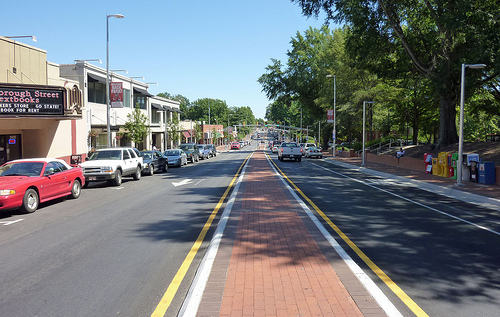Southwest Raleigh could soon get the name “Raleigh’s Creative District” with an economic development and branding effort headed to the city council for a vote next week.
The city set aside $150,000 last year for the development initiative, which would be a collaboration between the city and North Carolina State University to bring more people and businesses to the southwest area of the city. The district will include areas near the university, the state fairgounds and south toward Interstate 40.
The proposal drew criticism from some city councilors this week before it passed through the Budget and Economic Development Committee with a 3-1 vote. At-large councilor Mary Ann Baldwin, the sole “no” vote, questioned using the money for just one district.
Baldwin said there is competition for economic development funding in the city and said she wanted “to know why we aren’t looking at this more holistically.”
Nancy McFarlane (District A) also objected labeling only one portion of Raleigh the “creative district.”
NC State Design School Dean Marvin Malecha defended the move.
“Creativity is not owned by anyone,” he said. “We want to take the concepts of the university, like innovation and creativity, and extend them outwards into the city.”
Planning and Economic Development Director Mitch Silver said his department would look at the proposal and make sure it aligns with the entire city’s plans for development.
If approved by the full council, the Creative District will tap resources from the city, N.C. State, local businesses and organizations and residents to create a set of proposals during the next two years.
District D’s Thomas Crowder, “Creative District” representative and the plan’s biggest proponent, said this proposal will do the study to come up with the proposals.
“This is not the old-style study where you get an objective and do a study to justify it,” Crowder said.
Malecha said the two-year project will have incremental steps and deliverables along the way.
The first step will be to conduct an inventory of the area around the district and make a map with profiles on demographics, businesses, changes and resources, said Celen Pasalar, an assistant dean at the NC State Design School.
Pasalar told the committee that after the university conducts the area inventory, as she called it, they will reach out to businesses and residents to create a bigger vision for the area and opportunities for economic development. She said at the end of the process they hope to come up with three to five projects for the area.
When asked what those projects could look like, Malecha said, off the top of his head they could involve transportation or strategies to lower volatility in the housing market.
But, Malecha said, “the Ph.D. in the room,” pointing to Pasalar, “would say ‘don’t pre-bias the study.’”
Malecha said the University’s Vice Chancellor Charles Leffler pledged to help find private money for what Malecha called the possible “public-public partnership.”
